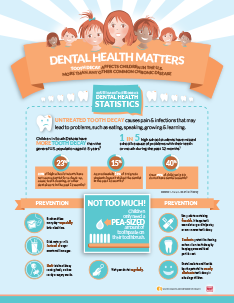Keep Prepared For Unanticipated Oral Emergency Situations By Recognizing The Signs Of Trauma And Recognizing When It Is Needed To Seek Urgent Medical Care
Keep Prepared For Unanticipated Oral Emergency Situations By Recognizing The Signs Of Trauma And Recognizing When It Is Needed To Seek Urgent Medical Care
Blog Article
Uploaded By- go to this website
If you really feel an unexpected shock of discomfort or observe a tooth injury, it can be upsetting. Yet how do you figure out if it's a dental emergency that requires prompt attention? Recognizing the important indications and recognizing when to seek aid can make all the difference in preserving your dental health and wellness. Understanding when to act quickly could suggest the difference in between a quick fix and a lot more comprehensive treatment.
Common Types of Dental Trauma
What're the common sorts of oral injury that you should be aware of?
Accidents can take place, leading to various types of dental injuries. One typical type of oral injury is a fractured tooth. This can happen from attacking down on something hard or experiencing a strike to the face.
One more type is a broken tooth, where a part of the tooth can chip off. Additionally, you may experience a knocked-out tooth, which can occur throughout sporting activities or drops. https://devincvoha.theisblog.com/30893615/an-extensive-exam-of-the-diverse-series-of-oral-treatments-and-procedures to deal with the tooth carefully and seek prompt dental attention.
Dental injury can additionally involve a tooth that has actually been pushed out of position or loosened up due to an injury. This type of injury requires punctual treatment to save the tooth.
Lastly, soft tissue injuries in the mouth, such as cuts, can additionally take place from accidents. Understanding about Recommended Web page of dental injury can assist you act swiftly and appropriately in case of an emergency situation.
Indications of Dental Emergencies
Recognizing the indicators of oral emergency situations is essential for prompt activity and proper treatment. If you experience extreme tooth discomfort that's constant and throbbing, it might show an underlying issue that needs prompt attention.
Swelling in the periodontals, face, or jaw can also signify a dental emergency, specifically if it's accompanied by pain or fever. Any kind of sort of trauma to the mouth resulting in a cracked, damaged, or knocked-out tooth must be treated as an emergency to avoid more damages and possible infection.
Hemorrhaging from the mouth that doesn't quit after applying pressure for a couple of minutes is another red flag that you need to look for emergency situation dental care. Furthermore, if you see any type of signs of infection such as pus, a nasty preference in your mouth, or a high temperature, it's vital to see a dental expert asap.
Ignoring Read Home could cause a lot more significant difficulties, so it's vital to act promptly when confronted with a potential dental emergency situation.
Value of Immediate Therapy
Prompt action and prompt treatment are vital in resolving oral emergency situations to stop more problems and ensure optimal outcomes for your dental health and wellness.
When faced with an oral emergency, such as a knocked-out tooth or severe tooth pain, seeking prompt treatment can make a significant distinction in conserving your tooth and minimizing pain. Postponing therapy can lead to infection, raised discomfort, and also long-term damages to your teeth and gum tissues.
By looking for emergency situation oral care promptly, you boost the possibilities of effective therapy and restoration. Dental practitioners have the essential abilities and tools to resolve emergency situations effectively, decreasing the risk of long-lasting consequences.
In addition, instant treatment can help take care of pain and discomfort, enabling you to resume your day-to-day activities without distraction.
Final thought
Finally, understanding oral injury and knowing when to seek first aid is vital for keeping oral wellness.
By identifying typical types of dental injuries and the indicators of oral emergency situations, you can ensure prompt care to prevent additional damage and complications.
Bear in mind, seeking prompt therapy can save teeth, lower pain, and enhance the chances of effective healing.
Do not hesitate to look for help from a dental professional if you experience any kind of indicators of oral trauma.
